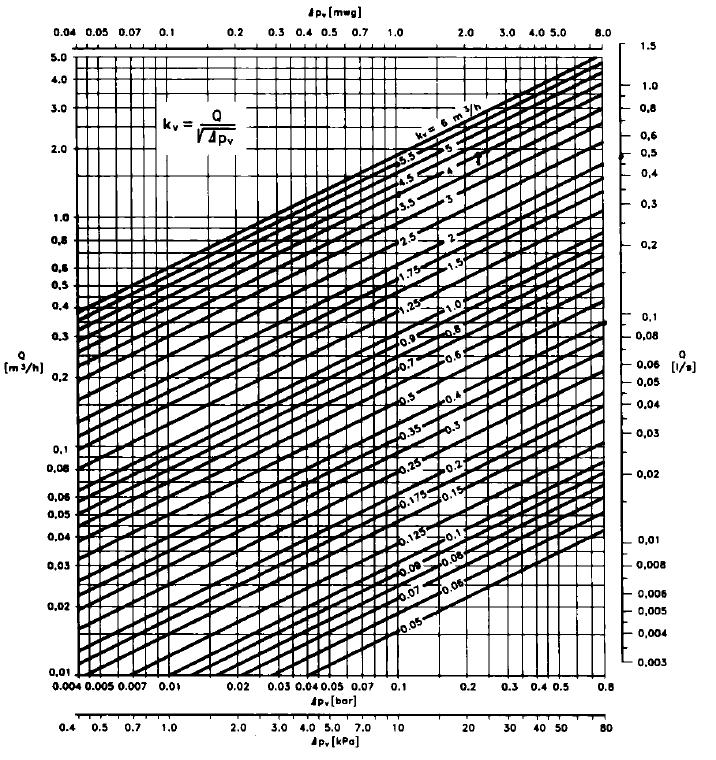
Useful Technical Data
Contents:
Properties of Water
Graph of pressure losses vs. flow rates
Chemical Formula: H2O
Water molecules are made up of two atoms of Hydrogen joined to one atom of Oxygen.
Melting / Freezing Temperature: 0°C
Boiling Temperature: 100°C
Density: 1000 kg / m3 or
1 kg / litre
This is a measure of the mass (weight) of a set volume of water.
Specific Heat Capacity: 4200 J / kg / °C
This is a measure of the amount of energy, measured in Joules, required to heat
water.
1 Watt = 1 Joule of energy per second
1 kW = 1000 Joules of energy per second
Often, energy is measured in kWhs
1 kWh = 3,600,000 Joules (= 3.6 MJ, 1 MJ = 1 million Joules)
Example: To calculate the amount of energy required to heat 100 litres of water through 10°C:
Energy = Mass of water (kg) x
Specific Heat Capacity x Change in Temperature
> Energy = 100 x 4200 x 10 = 4200000 Joules or
4.2 MJ
From this we can calculate the time it would take a 3kW heater to heat the water:
1 Watt = 1 Joule per second
> 3kW = 3000 Joules per second
Time taken (Seconds) = Energy Required (Joules) /
Energy Input (Watts)
> Time = 4200000 / 3000 = 1400 seconds = 23.3 minutes
Note: It is very important to work in the correct units when making energy calculations.

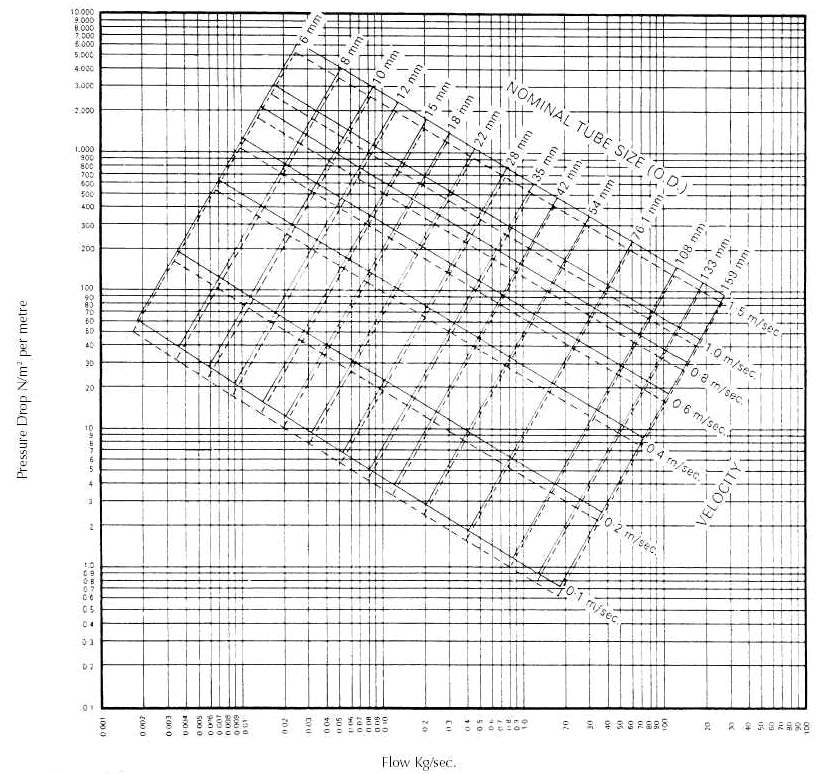
Pressure Losses through common Thermostatic Valves:
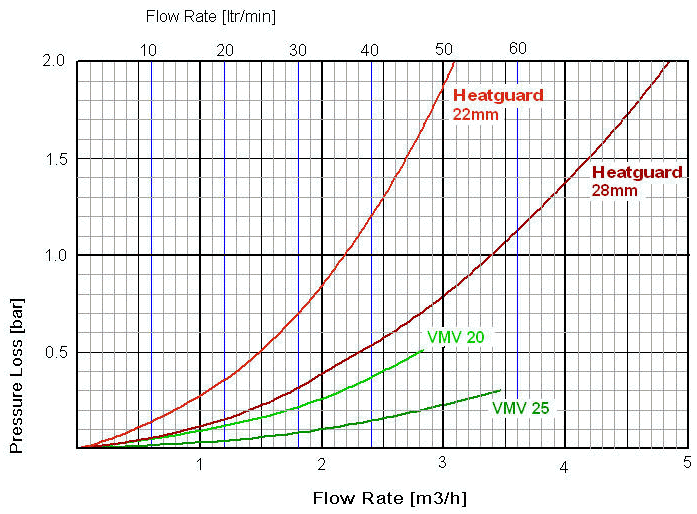
Pump Curves for standard domestic circulator 5m head:
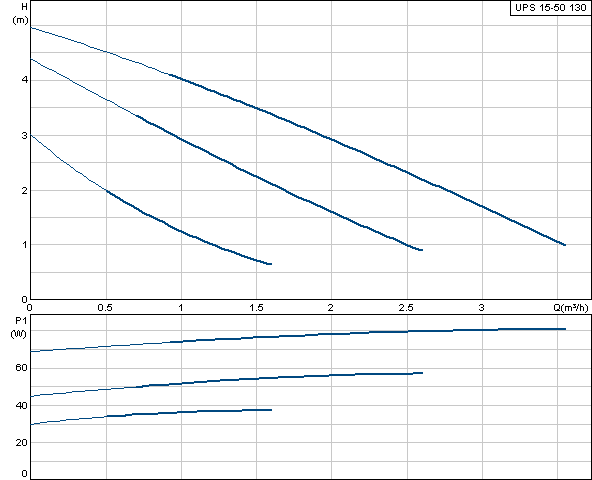
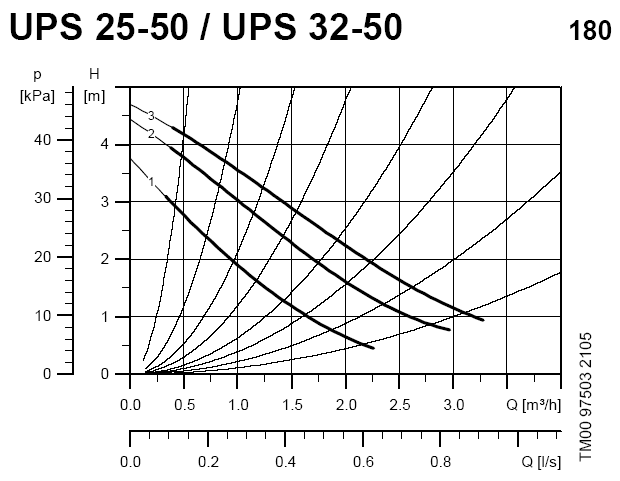
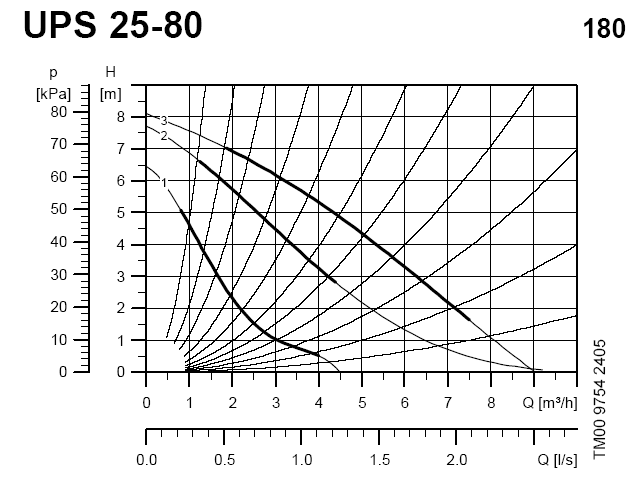
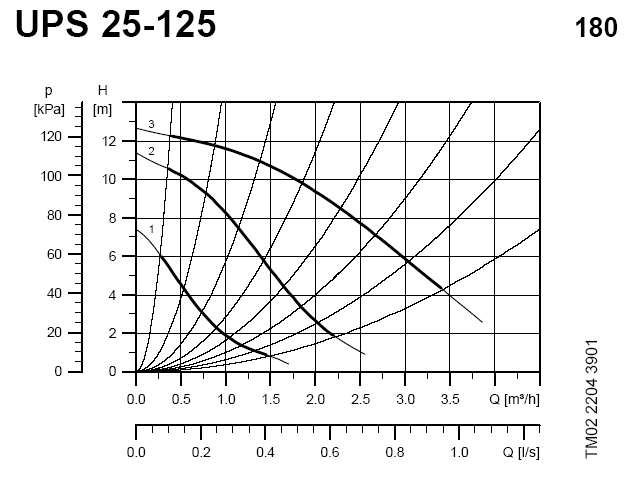
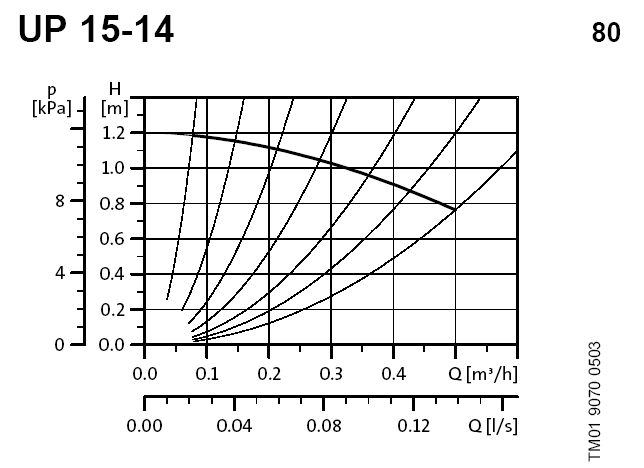
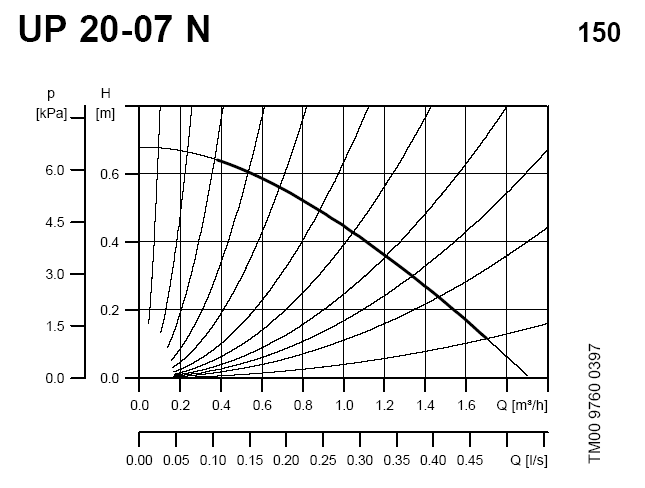
Conductivity (k) is the ability to conduct heat through a material.
Heat Flow in Watts = (thermal conductivity) x (area / length) x (temperature difference)
| Group | Material | Specific mass (kg/m3) | Thermal conductivity (W/mK) | |
|---|---|---|---|---|
| Dry | Wet |
|||
| Metal | Aluminium | 2800 | 204 | 204 |
| Copper | 9000 | 372 | 372 | |
| Lead | 12250 | 35 | 35 | |
| Steel, Iron | 7800 | 52 | 52 | |
| Zinc | 7200 | 110 | 110 | |
| Natural stone | Basalt, Granite | 3000 | 3.5 | 3.5 |
| Bluestone, Marble | 2700 | 2.5 | 2.5 | |
| Sandstone | 2600 | 1.6 | 1.6 | |
| Masonry | Brick | 1600-1900 | 0.6-0.7 | 0.9-1.2 |
| Sand-lime brick | 1900 | 0.9 | 1.4 | |
| 1000-1400 | 0.5-0.7 | |||
| Concrete | Gravel concrete | 2300-2500 | 2.0 | 2.0 |
| Light concrete | 1600-1900 | 0.7-0.9 | 1.2-1.4 | |
| 1000-1300 | 0.35-0.5 | 0.5-0.8 | ||
| 300-700 | 0.12-0.23 | |||
| Pumice powder concrete | 1000-1400 | 0.35-0.5 | 0.5-0.95 | |
| 700-1000 | 0.23-0.35 | |||
| Isolation concrete | 300-700 | 0.12-0.23 | ||
| Cellular concrete | 1000-1300 | 0.35-0.5 | 0.7-1.2 | |
| 400-700 | 0.17-0.23 | |||
| Slag concrete | 1600-1900 | 0.45-0.70 | 0.7-1.0 | |
| 1000-1300 | 0.23-0.30 | 0.35-0.5 | ||
| Inorganic | Asbestos cement | 1600-1900 | 0.35-0.7 | 0.9-1.2 |
| Gypsum board | 800-1400 | 0.23-0.45 | ||
| Gypsum cardboard | 900 | 0.20 | ||
| Glass | 2500 | 0.8 | 0.8 | |
| Foam glass | 150 | 0.04 | ||
| Rock wool | 35-200 | 0.04 | ||
| Tiles | 2000 | 1.2 | 1.2 | |
| Plasters | Cement | 1900 | 0.9 | 1.5 |
| Lime | 1600 | 0.7 | 0.8 | |
| Gypsum | 1300 | 0.5 | 0.8 | |
| Organic | Cork (expanded) | 100-200 | 0.04-0.0045 | |
| Linoleum | 1200 | 0.17 | ||
| Rubber | 1200-1500 | 0.17-0.3 | ||
| Fibre board | 200-400 | 0.08-0.12 | 0.09-0.17 | |
| Wood | Hardwood | 800 | 0.17 | 0.23 |
| Softwood | 550 | 0.14 | 0.17 | |
| Plywood | 700 | 0.17 | 0.23 | |
| Hard-board | 1000 | 0.3 | ||
| Soft-board | 300 | 0.08 | ||
| Chipboard | 500-1000 | 0.1-0.3 | ||
| Wood chipboard | 350-700 | 0.1-0.2 | ||
| Synthetics | Polyester (GPV) | 1200 | 0.17 | |
| Polyethene, Polypropene | 930 | 0.17 | ||
| Polyvinyl chloride | 1400 | 0.17 | ||
| Synthetic foam | Polystyrene foam, exp. (PS) | 10-40 | 0.035 | |
| Ditto, extruded | 30-40 | 0.03 | ||
| Polyurethane foam (PUR) | 30-150 | 0.025-0.035 | ||
| Phenol acid hard foam | 25-200 | 0.035 | ||
| PVC-foam | 20-50 | 0.035 | ||
| Cavity isolation | Cavity wall isolation | 20-100 | 0.05 | |
| Bituminous materials | Asphalt | 2100 | 0.7 | |
| Bitumen | 1050 | 0.2 | ||
| Water | Water | 1000 | 0.58 | |
| Ice | 900 | 2.2 | ||
| Snow, fresh | 80-200 | 0.1-0.2 | ||
| Snow, old | 200-800 | 0.5-1.8 | ||
| Air | Air | 1.2 | 0.023 | |
| Soil | Woodland soil | 1450 | 0.8 | |
| Clay with sand | 1780 | 0.9 | ||
| Damp sandy soil | 1700 | 2.0 | ||
| Soil (dry) | 1600 | 0.3 | ||
| Floor covering | Floor tiles | 2000 | 1.5 | |
| Parquet | 800 | 0.17-0.27 | ||
| Nylon felt carpet | 0.05 | |||
| Carpet (with foam rubber) | 0.09 | |||
| Cork | 200 | 0.06-0.07 | ||
| Wool | 400 | 0.07 | ||
[ Home | Map | About | Tips | Products ]
© Copyright Dedicated Pressure Systems Ltd., 1998
All rights reserved